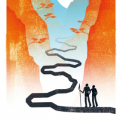Thich Nhat Hanh's No Mud, No Lotus and the 4NT
 Jeroen
Not all those who wander are lostNetherlands Veteran
Jeroen
Not all those who wander are lostNetherlands Veteran
I thought it would be fun to discuss Thich Nhat Hanh's book No Mud, No Lotus in which he talks about the art of transforming suffering, and how suffering and happiness are like left and right, you can't have one without the other. For those who wish to read some of the book, quite a big chunk of it is available online here:
No Mud, No Lotus on google books
Lions Roar article which is an extract from No Mud, No Lotus
TNH talks about bringing the energy of mindfulness to one's suffering and cradling it tenderly, as a first step to transforming it. It strikes me as true, I've done this in the past and it has worked for me. The subsequent steps of looking deeply do lead to a deep ease.
So what do you say, is this an alternate path to the cessation of suffering? The 4NT say the way to the cessation of suffering is through the Noble Eightfold Path, first sila, then concentration, then meditation and the jhana's.

Comments
I guess I don't necessarily see them as separate paths. I think what TNH teaches, as a whole, encompasses all of the Eightfold Path, but he takes the twist of helping people to focus it on themselves rather than the external world, which is our tendency. By focusing on applying it to ourselves, we naturally arrive at a place where we then can apply it outwardly. It does little good to do it otherwise, yet that is where we so often end up. We see Right Speech and what it entails, and we go out into the world to practice it. But think nothing of the critical nature we have of ourselves. I think that's pretty true for the whole Eightfold Path.
That is true, I was re-watching some of the "art of suffering" retreat webcasts yesterday and he presented the whole Noble Eightfold Path in almost conventional form.
But then he says something like:
From page 12 of No Mud, No Lotus. It gels with his whole mindfulness approach, from the second Art of Suffering retreat talk he gave the Four Noble Truths as:
It's actually a tremendously insightful treatment of the Four Noble Truths, pointing clearly to the fact that suffering and happiness are not separate. Well-being is the promise, given by the fact that there is a cessation of ill-being. My intuition and my sense of rightness tell me that this is causing an evolution deep within, it's a good feeling.
One thing that surprised me is his focus on transforming suffering. It is naturally reduced, but you give it mindful attention, "cradling it tenderly as a mother cradles her baby". You don't avoid it or try to destroy it or ignore it. It's a beautiful process.
My nephew at age 12 once asked me if I knew that suffering and joy were opposite ends of the same stick? Where or where did that come from? Certainly not from the family. Sadly he can't remember ever having such a thought.
I agree, @Kerome. I find it an amazing process and such a wonderful way to look at things.
I've bought the book now, I'll post up a few more things about it once I have read the whole thing. The first thirty pages gave me a good idea of what the rest would be like and I thought it would make a good permanent addition to my library.
I've been looking for my copy since you started this thread and it's starting to drive me nuts. I did find my copy of Zen Flesh Zen Bones I thought had vanished so thanks for that anyways.
I decided to look up the book you mentioned, @David: Zen Flesh Zen Bones, because every book I've ever bought about the subject of zen, has always been especially interesting. Got a used/like new copy off of Amazon. Thanks for the mention.
Your True Home by TNH
I've now finished the book, and I'll answer my own question, it's not an alternative to the 4NT or the N8FP, but it does contain methods for minimising our suffering. Mindfulness is a recurring theme.
The first thing to understand is that there are two key processes at work, one through which suffering is transformed and diminished, and a second where you replace suffering with mindful awareness and the breath. There are various steps, from acknowledging suffering through to embracing it tenderly and looking deeply within.
There are a number of Buddhist staples, such as a very clear explanation of the "second arrow", various stories and in the end five practices for nurturing happiness. In the end the book is not just about suffering, it is about the balance between suffering and happiness and what one can do to encourage living a happy life.
At the end are various practices for happiness, including a modern English write up of the Anapanasati Sutra breathing techniques, six very good mantra's for sharing moments with people, and various other practices for happiness.
On the whole I very much enjoyed it, and I feel I will get a lot out of the practices he lists at the back. It's a much more practical approach to suffering than the chapter in the Heart of the Buddha's Teaching and contains many good, practical applications of mindfulness. It's going to become a regular to re-read I think.
I have not read the book.
But, the lotus grows in Audy pond. The muddier the pond, the more beautiful the lotus. Just like life.